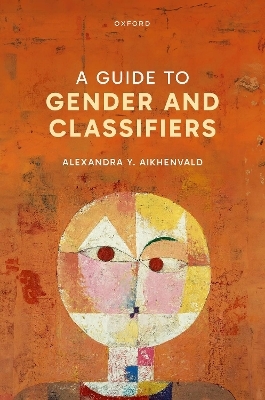
A Guide to Gender and Classifiers
Oxford University Press (Verlag)
978-0-19-886360-1 (ISBN)
- Noch nicht erschienen (ca. März 2025)
- Versandkostenfrei
- Auch auf Rechnung
- Artikel merken
This book explores the range of noun categorization devices found in the languages of the world, from the extensive systems of numeral classifiers in Southeast Asia to the highly grammaticalized gender agreement classes in Indo-European languages. Almost all languages use some type of noun categorization device in their grammar, with the most widespread being linguistic gender, whereby nouns are classified based on core semantic properties such as sex, animacy, humanness, or shape and size. Numeral classifiers are also common, and classify a noun in terms of its inherent nature, animacy, shape, and form, accompanied by a numeral or a quantifier. Other types of noun categorization devices include noun classifiers, possessive classifiers, verbal classifiers, and a number of rarer types such as locative and deictic classifiers. In this volume, Alexandra Aikhenvald investigates all facets of these nominal categorization systems, from their form and distribution to their origins, development, and loss.
Noun categorization devices provide unique insights into how people categorize the world through the language: in one language, a human might be classified in terms of orientation, hence as 'vertical', in another as male or female, and in another as simply 'animate' or even 'rational'. They also change as society changes, reflecting the ways in which language and social environment are integrated into a single whole.
Alexandra Y. Aikhenvald is Professor, Australian Laureate Fellow, and a Language and Culture Research Cluster Lead at the Jawun Research Centre at Central Queensland University in Cairns. She is a major authority on languages of the Arawak family, from northern Amazonia, and has written grammars of Bare (1995) and Warekena (1998), plus A Grammar of Tariana, from Northwest Amazonia (CUP, 2003) and The Manambu Language of East Sepik, Papua New Guinea (OUP, 2008; paperback 2010), in addition to essays on various typological and areal features of South American and Papuan languages and typological issues including evidentials, classifiers, and serial verbs. Her other recent publications with OUP include The Art of Grammar (2015), How Gender Shapes the World (2016; paperback 2019), and Serial Verbs (2018; paperback 2021), in addition to over a dozen edited volumes, including The Oxford Handbook of Evidentiality (OUP 2017; paperback 2024).
1: Noun categorization devices: Setting the scene
Part I. Gender
2: Gender: Meanings and choices
3: The expression of gender
4: Gender in its further guises
Part II. Classifiers
5: Numeral classifiers
6: Noun classifiers
7: Classifiers in possessive constructions
8: Verbal classifiers
9: Classifiers of further kinds
10: Gender and classifiers in one language
11: Multiple classifier languages: Contexts and properties
Part III. Gender and classifiers: Meanings, function, evolution
12: The meanings of gender and of classifiers
13: What are gender and classifiers good for?
14: The world through the prism of language: Social context and cognitive patterns in gender and classifiers
15: Origins and histories of gender and classifiers
16: Contact, obsolescence, and social change in gender and classifiers
17: How gender and classifiers are acquired, and how they are lost
18: Gender and classifiers: The heart of the matter
Appendix. A fieldworker's guide: How to know more about genders and classifiers
| Erscheint lt. Verlag | 17.3.2025 |
|---|---|
| Verlagsort | Oxford |
| Sprache | englisch |
| Maße | 156 x 234 mm |
| Themenwelt | Geisteswissenschaften ► Sprach- / Literaturwissenschaft ► Sprachwissenschaft |
| Sozialwissenschaften ► Ethnologie | |
| Sozialwissenschaften ► Soziologie | |
| ISBN-10 | 0-19-886360-8 / 0198863608 |
| ISBN-13 | 978-0-19-886360-1 / 9780198863601 |
| Zustand | Neuware |
| Informationen gemäß Produktsicherheitsverordnung (GPSR) | |
| Haben Sie eine Frage zum Produkt? |
aus dem Bereich


